Engagement Rings vs. Wedding Rings: A Complete Guide
Engagement Rings vs. Wedding Rings: A Complete Guide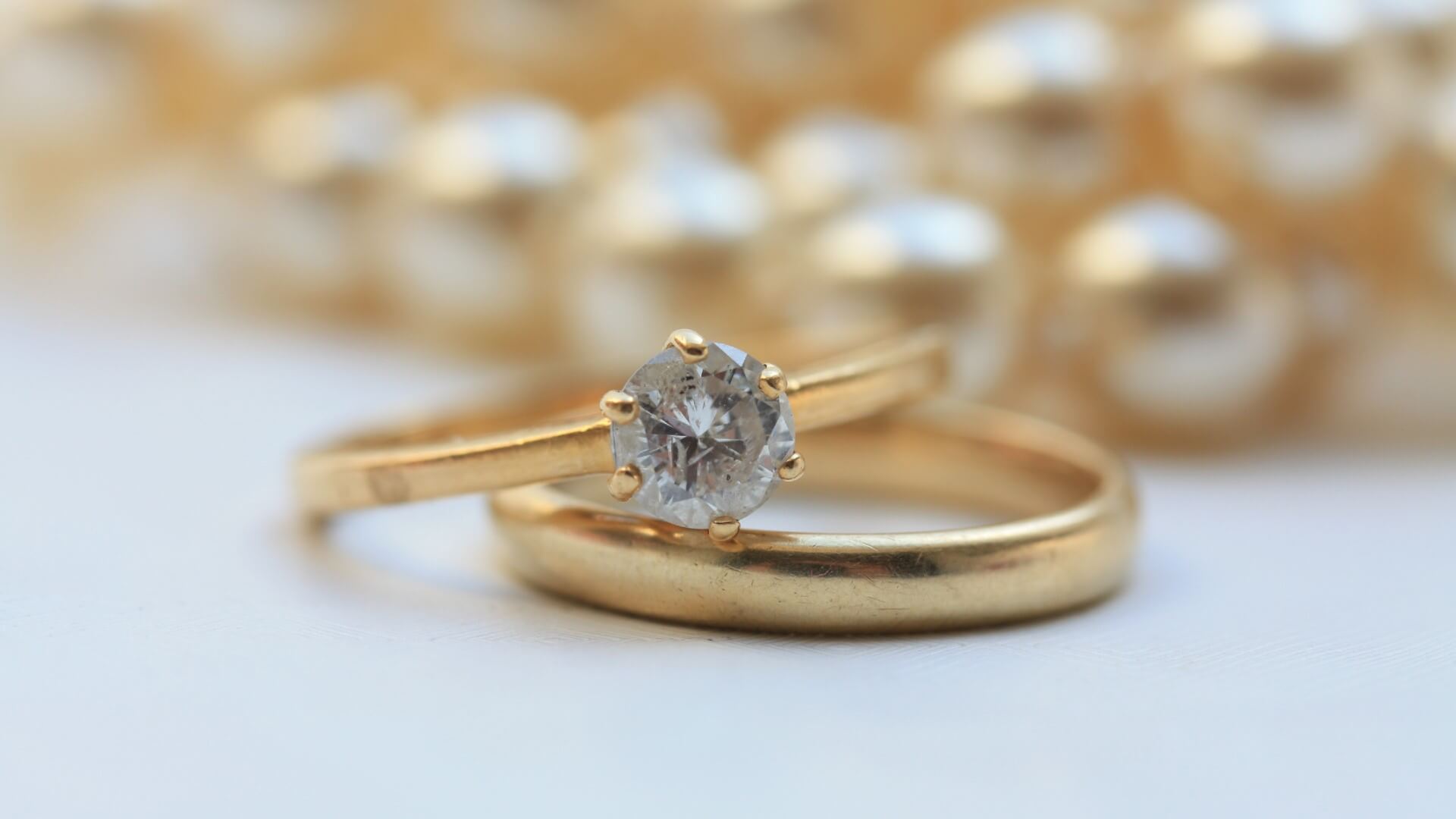
If you’ve arrived here looking for wedding ring etiquette or a how-to guide for choosing an engagement ring, you’ve come to the right place. But you also may be in for a surprise.
For every rule you’ve been told about what your ring should look like or how you should wear it, there are as many exceptions. But don’t get confused — the more you understand the tradition behind these heartfelt pieces of jewelry, the more prepared you’ll be to pick something that feels uniquely you.
And that’s just how it should be.
What Is an Engagement Ring?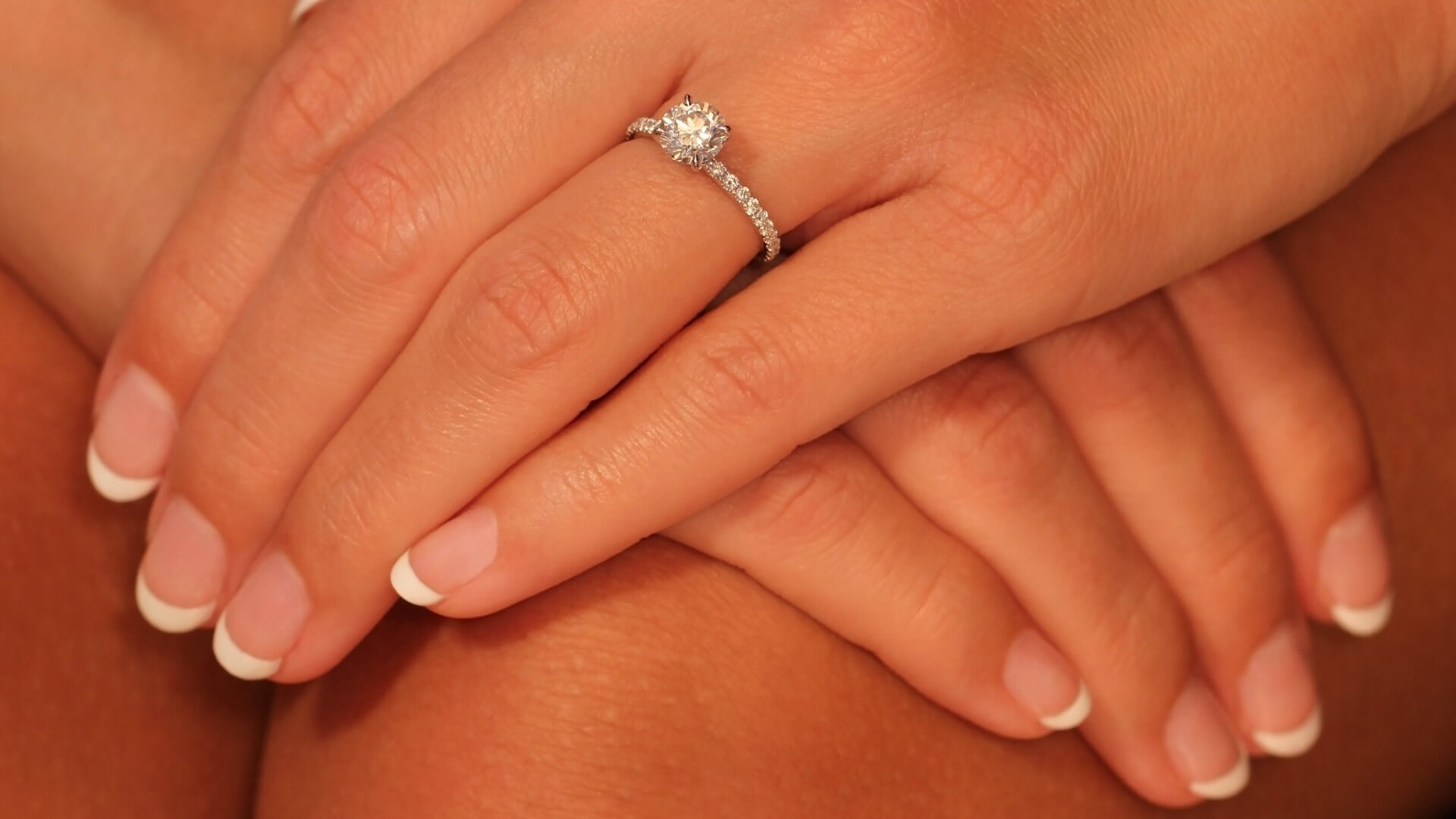
Modern engagement rings are typically flashy pieces of jewelry that involve precious metals and glittering gemstones. They’re most often given during a proposal (or soon thereafter) as a symbol of the asker’s intent to marry the second person. The recipient, assuming they say “yes,” wears the ring to honor that same promise.
Anthropologists have traced the history of engagement rings back to a Roman custom that saw husbands giving their wives a small key with a ring attached. These baubles were intended to indicate ownership, but that sentiment has evolved quite a bit in the countless centuries since. Today, engagement rings are a meaningful, tangible representation of love. There are no limitations as to what an engagement ring can look like. It can be small and dainty or large and breathtakingly extravagant. Part of the fun is picking an engagement ring that reflects the wearer’s individual style and preferences.
What Is a Wedding Ring?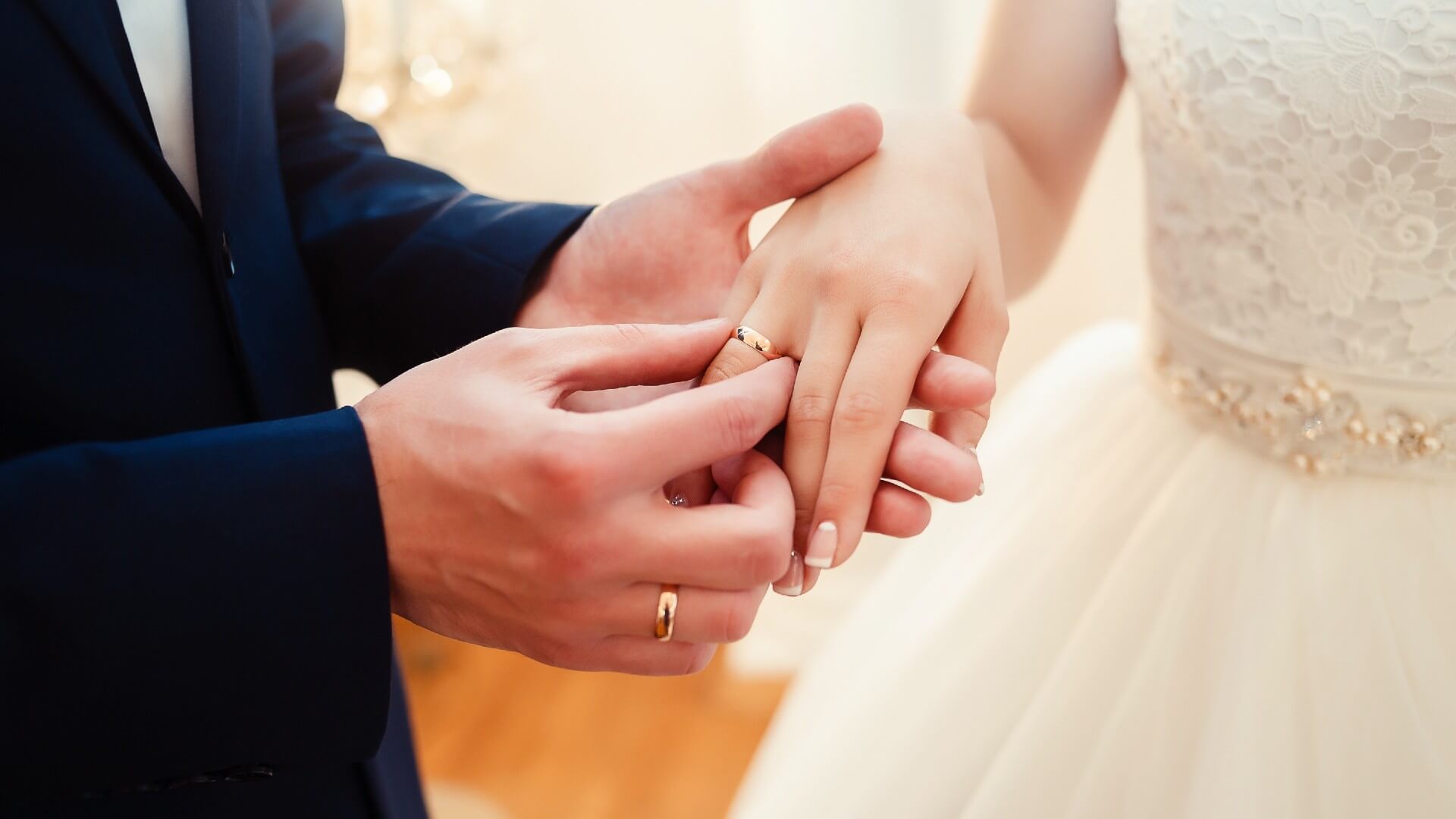
Many anthropologists believe that the idea of a wedding ring originated in ancient Egypt, when pharaohs used a circular band to represent eternity. One such style was the ouroboros ring, which featured a snake winding around until it swallowed its own tail — no beginning, no end. This tradition made its way to the Greeks thanks to Alexander the Great, and then the Romans, and soon giving a ring to your sweetheart was a cultural norm.
These rings were typically fairly simple, even crude. Initially, wedding rings were hammered metal or even whittled pieces of wood or bone. Later, they became more luxurious. Those with money chose rings made of gold, and in the 3rd and 4th centuries, new styles emerged including more ornate, carved bands as well as decorative gemstones.
Today, wedding rings are often simple, beautifully polished bands in gold, white gold, platinum or titanium. They may have stones — an eternity-style band ring with pave-set diamonds, for example — and some are shaped to sit snuggled against the unique lines of the wearer’s engagement ring. The idea is for the two rings to look like a set; one represents the promise of a future marriage, and the other represents the “’til death do us part” promise said at the altar.
Engagement Rings vs. Wedding Rings: Diamonds and Gemstones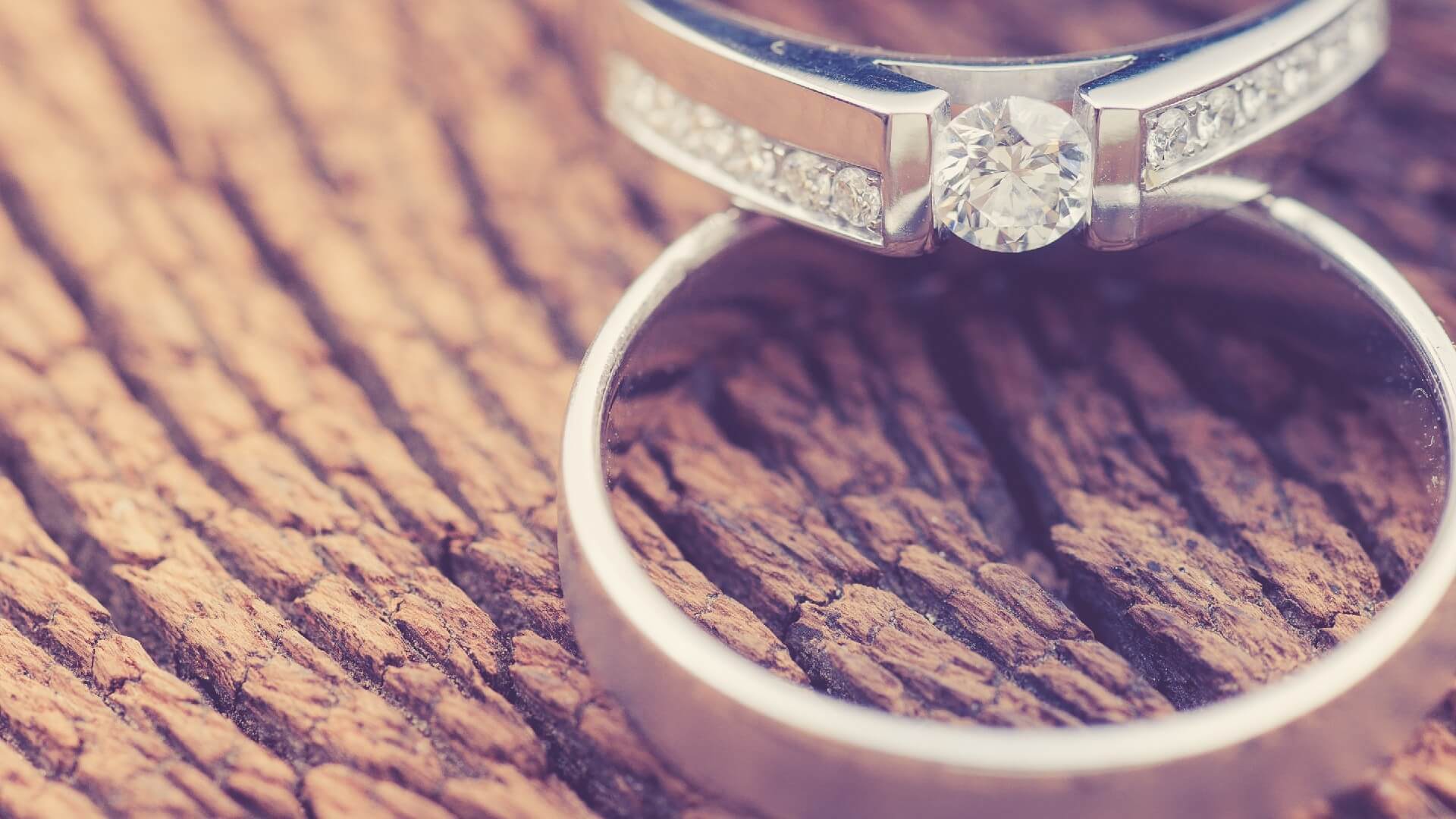
One of the most exciting and eye-catching elements of a wedding or engagement ring is its stones. Traditional engagement rings have a single stone, a style which is referred to as a solitaire. Two-stone and three-stone engagement rings are also popular. Vintage engagement rings often reflect what was in style when they were made, while vintage-inspired engagement rings capture the best of a certain era and give it a contemporary tweak.
Wedding rings are commonly designed with a plain band and without any gemstones, but that’s by no means a hard and fast rule. Wedding bands can run the gamut from a thin streamlined band to a braided band or one with engraving. They may have a few strategically placed gemstones or be completely encrusted with diamonds. The idea is to pick a style that both complements the engagement ring (if there is one) and suits the wearer’s lifestyle.
How to Wear Engagement and Wedding Rings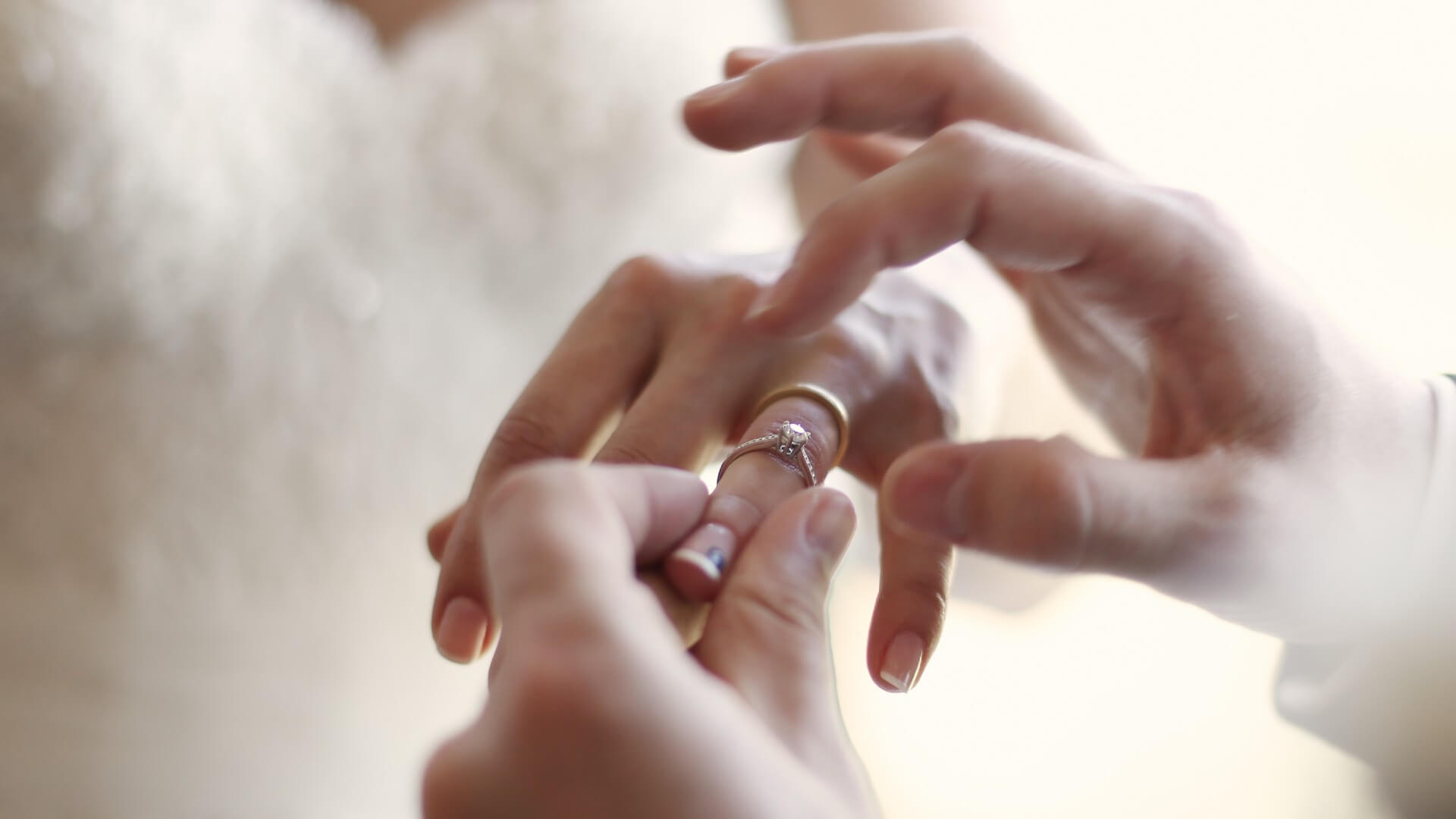
It turns out we have the Egyptians to thank not only for the idea of a wedding ring but also how we tend to wear it. In Ancient Egypt, people believed that the vena amoris (“the vein of love”) ran from the heart down through the fourth finger of the left hand, giving a piece of jewelry worn on that finger a straight path to the heart. While modern science fails to back up those early assumptions regarding the layout of our circulatory systems, the ritual of wearing wedding and engagement rings on that special finger remains.
As for which ring slides on first, the engagement ring or the wedding band, there are a few schools of thought. Obviously, an engagement ring is worn solo before the wedding, as that’s the only ring currently in play. On the day of the wedding, many brides choose to switch their engagement ring to their right hand before the ceremony begins. Once it’s time for the exchanging of rings, the groom slides the bride’s ring onto her bare left-hand ring finger and the bride does the same to the groom.
After the ceremony, the bride slides her engagement ring onto her left-hand ring finger. The wedding ring stays on the inside, taking its place closest to the wearer’s heart.
Of course, there are exceptions:
- Some people choose to wear just their wedding ring every day and save their engagement ring for special occasions. This works well for anyone with an active job or who worries about damaging the ring or risking loss or theft while on the go.
- Some people have their wedding and engagement rings soldered together to prevent loss and to keep the rings comfortably in place.
- Men who choose to wear an engagement ring may use the same ring during and after the wedding. In this case, it’s common to remove the ring prior to the ceremony and give it to the groomsman or other attendant so it’s ready for the ring exchange. The same idea applies to brides who choose to use their engagement ring as their wedding ring as well.
- In some cultures and religions, it’s traditional to wear wedding rings on the right hand instead of the left.
Ultimately, how you wear your ring or rings is up to you. Leave them off when it feels right. Put them on a chain and wear them as a necklace if your lifestyle calls for it.
Do You Have to Wear Both?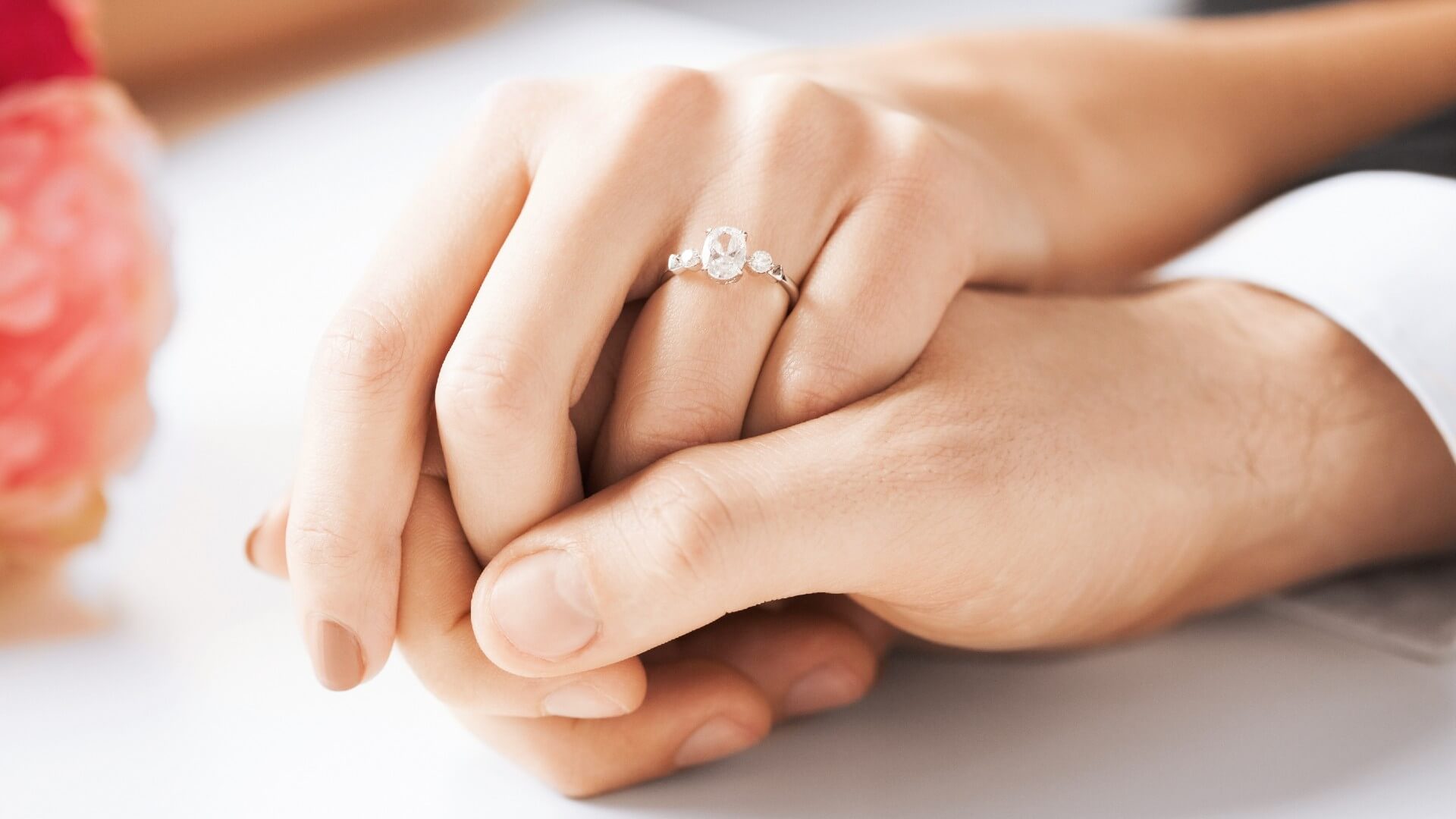
In short: Nope!
While it’s conventional in the United States to wear both your engagement and wedding rings simultaneously, it’s by no means a requirement. You may choose to wear a single band that serves both purposes. Other people adore the glitz of their engagement ring but choose not to wear it every day. People who work in very physical professions, such as laborers or machinists, or those in regular contact with hazardous materials, such as chemists and nurses, may wear no ring or stick with a wedding band that’s easy to remove and clean as needed.
There are several reasons you may want to consider a single ring instead of a pair.
- If you’re not typically a jewelry person, it’s likely easier to adjust to wearing a single slim ring than to get used to wearing two.
- A single ring with a slim band may be more comfortable.
- You can use the entirety of your budget to create one jaw-dropping ring instead of splitting the budget to buy two. That means considering larger gems or higher quality diamonds and perhaps the opportunity to splurge on other details like accent stones and intricate metalwork.
The bottom line: Engagement rings and wedding rings can be whatever you want them to be. Whether you’re a strict traditionalist or eager to throw convention out the window, you can find — or better yet, design — a ring you and your spouse will love today, tomorrow and always.

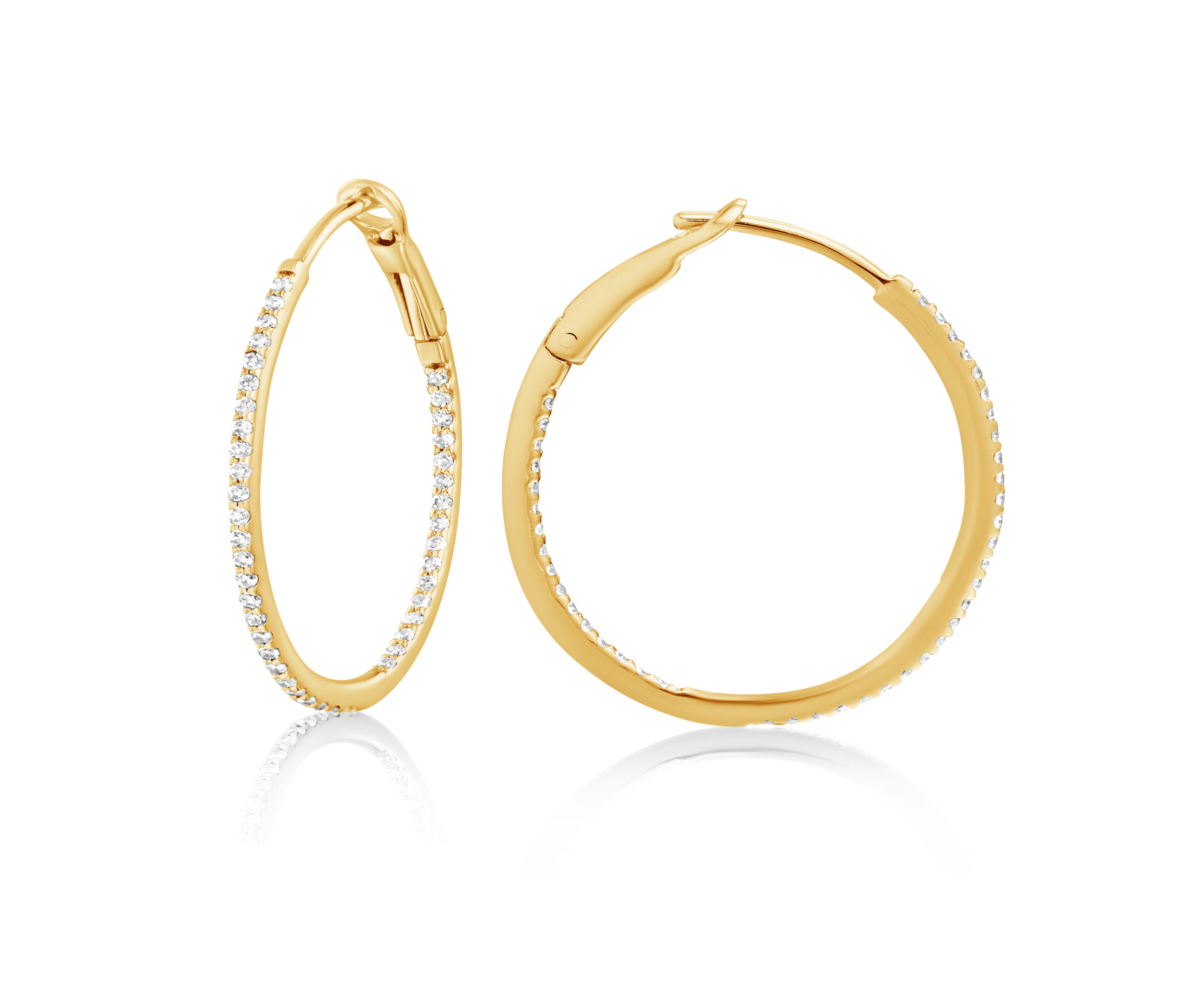


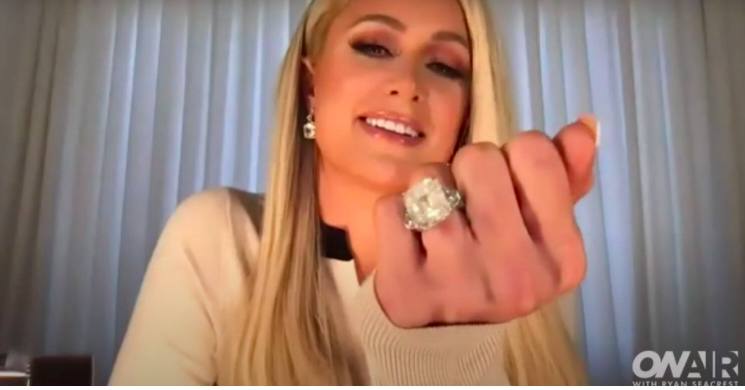
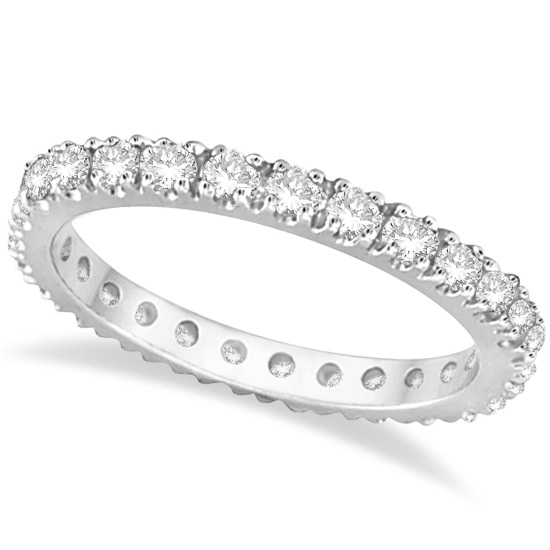
POST COMMENT